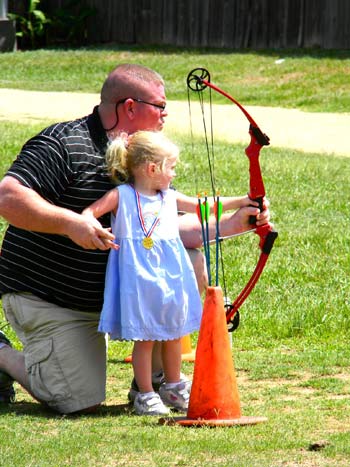 Guest contributor Shane Mize is the Recreation Superintendent for Missouri City Texas. Has a B.B.S. in Sports, Fitness and Leisure Management from Hardin-Simmons University and a M.S. in Recreation, Parks and Tourism Administration from Western Illinois University. He is a former TRAPS Tex-Tern, NRPA Young Professional Fellow and AAPRA Young Professional Extern. He is currently the TRAPS Young Professional of the Year, chair-elect of the Young Professional Network and serves on the Congress Program Committee. When he is not working he enjoys spending time with his wife and four children.
Guest contributor Shane Mize is the Recreation Superintendent for Missouri City Texas. Has a B.B.S. in Sports, Fitness and Leisure Management from Hardin-Simmons University and a M.S. in Recreation, Parks and Tourism Administration from Western Illinois University. He is a former TRAPS Tex-Tern, NRPA Young Professional Fellow and AAPRA Young Professional Extern. He is currently the TRAPS Young Professional of the Year, chair-elect of the Young Professional Network and serves on the Congress Program Committee. When he is not working he enjoys spending time with his wife and four children.
Millennials, as defined by Wikipedia, are the generation after Generation X--anyone born from the mid-to late 70s to the early 90s. That would put the current age range of the Millennials to be anywhere from 20-35. That age range also accurately describes what a young professional is, as defined by NRPA’s membership page; any professional, 35 and younger, who is working at least part-time in the parks and recreation field. The young professionals in the field now are defined as Millennials and share a lot of the same characteristics, but there are differences as well. Knowing the differences will help you understand the young professional you are working with, supervising (or perhaps even being supervised by), a lot better.
Like most Millennials, current young professionals have the highest student loan debt of any generation coming into the workforce. Due to the current economy, many Millennials find it difficult to obtain an entry-level job. As a result, many work part-time jobs and live with parents after college; but the current parks and rec young professional is different. The majority of NRPA’s young professionals (non-students), do have at least an entry level job and are living on their own. And they are driven to make an impact. This drive, combined with their high student loan debt will cause most young professionals in the field to take anywhere from 12-15 different parks and recreation jobs during their career. This inclination toward "job-surfing" will bother almost all Baby Boomers, who averaged two to three jobs in a career, as well as many Generation X’ers, who will average 5-8 jobs across a career. Yet, with the expected retirements of so many Baby Boomers in the next four to five years, the opportunity to "promote up" and grow professionally will be both appealing and possible.
The typical Millennial has never had a VCR, has always had hundreds of channels to choose from, and would give you a blank stare if you referred to a walkman. She has had a cell phone since middle school (or maybe even earlier) and has had access to the internet as long as she can remember. He is very aware of social media, his mobile devices keep him well connected, and he texts/chats/emails contacts and friends far more often than he talks to them. As a generation, they are thoroughly wired into technology, used to receiving and balancing a lot of information at once, and skilled in processing information quickly to make decisions.These young professionals will use these skill sets to lead a changing parks and recreation industry in the upcoming years.
Peer-to-peer networking sites like Facebook, LinkedIn, MySpace and even Napster hve fostered a more “community-oriented” mindset with the Millennials. Current young professionals are likely to live in urban areas or apartment settings, and they are more “civic minded” than their parents. In their spare time, they might volunteer at social and community revitalization projects. These characteristics are important when trying to predict where our parks and recreation agencies are headed. With churches, local sports associations and both neighborhood and home owner associations all offering the same park and recreation programming that park and recreation departments do, we as an industry will need to decide whether we want to continue to compete with these other recreational programmers or let the current young professionals lead us in a new direction. Considering that most (due to their entry-level positions) are in charge of the park and recreation programming, they will be very influential in deciding where our industry goes from here. With the knowledge that this generation is, by and large, more community-oriented than the X'ers and the Boomers, expect to see famer’s markets, community gardens and informal recreation in the future.
Will this generation continue to do camps, sports leagues and fitness programming? Yes--those programs are the backbone of most departments. But I believe we are entering an era in which nature walks, park revitalizations and community service projects will change the way the next generation of children experiences parks and recreation.
Shane Mize
Recreation Superintendent
Missouri City, Texas

